[ez-toc]
Introduction
Hip pain can significantly impact your daily activities and quality of life. Whether it’s caused by an injury, arthritis, or overuse, finding effective ways to manage hip pain is essential.
This article will explore a comprehensive approach to managing hip pain through therapeutic exercises. These exercises can help alleviate pain, improve mobility, and strengthen the muscles surrounding the hip joint.
By incorporating these exercises into your routine, you can take proactive steps toward managing and reducing hip pain.
Understanding Hip Pain
Hip pain can occur for various reasons, including muscle strains, tendonitis, bursitis, osteoarthritis, or hip joint injuries. It may present as localized pain in the hip joint or groin area or even radiate to the buttocks or thigh.
Proper diagnosis by a healthcare professional is crucial in determining the underlying cause of hip pain.
Benefits of Therapeutic Exercises for Hip Pain
Therapeutic exercises offer several benefits for managing hip pain. They help improve flexibility, strengthen the muscles supporting the hip joint, enhance stability, and promote better overall hip function.
Additionally, therapeutic exercises can help reduce inflammation, alleviate pain, and prevent further injury.
Stretching Exercises for Hip Pain Relief
Stretching exercises can help relieve tension, improve flexibility, and reduce hip pain. Here are a few stretching exercises you can incorporate into your routine:
Hip Flexor Stretch
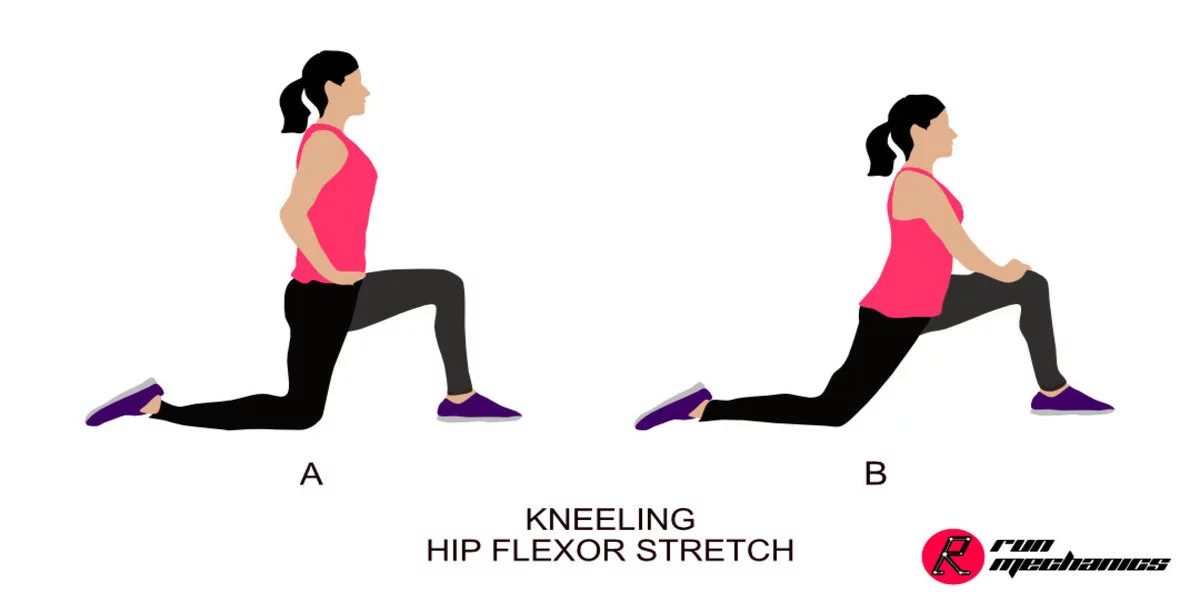
To perform this stretch:
- Kneel on one knee, keeping the other leg bent at a 90-degree angle in front of you.
- Slowly push your hips forward until you feel a stretch in the front of your hip.
- Hold the time for 20-30 seconds and repeat on the other side.
Piriformis Stretch
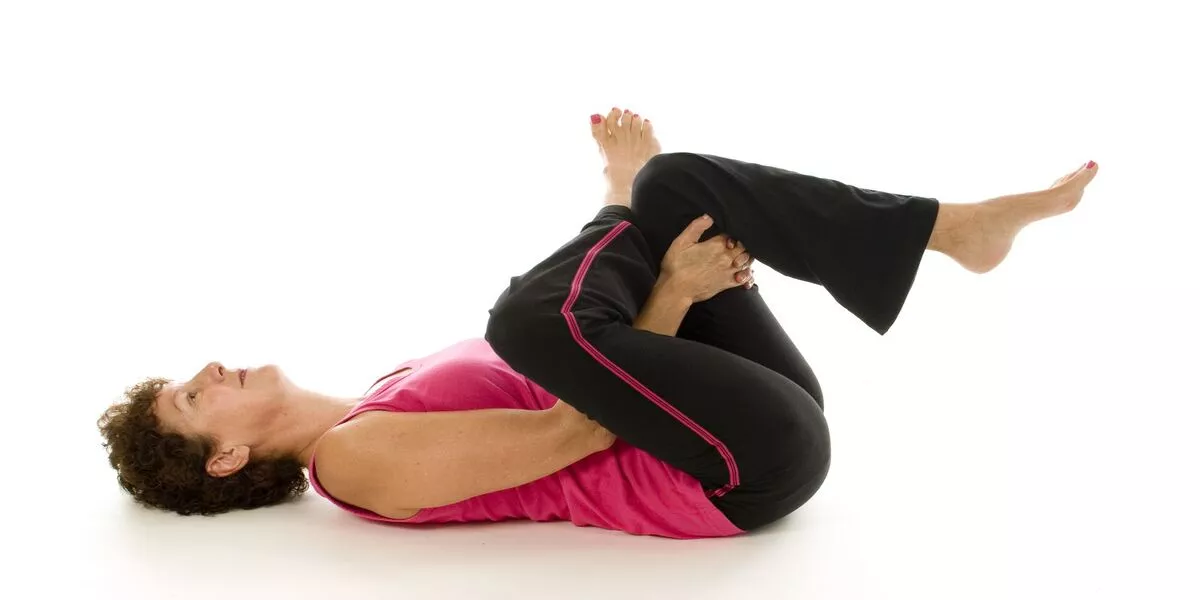
To perform this stretch:
- Sit on the edge of a chair with your feet flat on the floor.
- Cross one ankle over the opposite knee.
- Gently press down on the knee of the crossed leg until you feel a stretch in your hip and buttock.
- Hold the stretch for 20-30 seconds and repeat on the other side.
Strengthening Exercises for Hip Stability
Strengthening exercises are vital in managing hip pain by improving stability and supporting the hip joint.
Also Read: Elbow Pain Relief: Exercises to Restore Function and Reduce Discomfort
Here are a few exercises to consider:
Clamshells
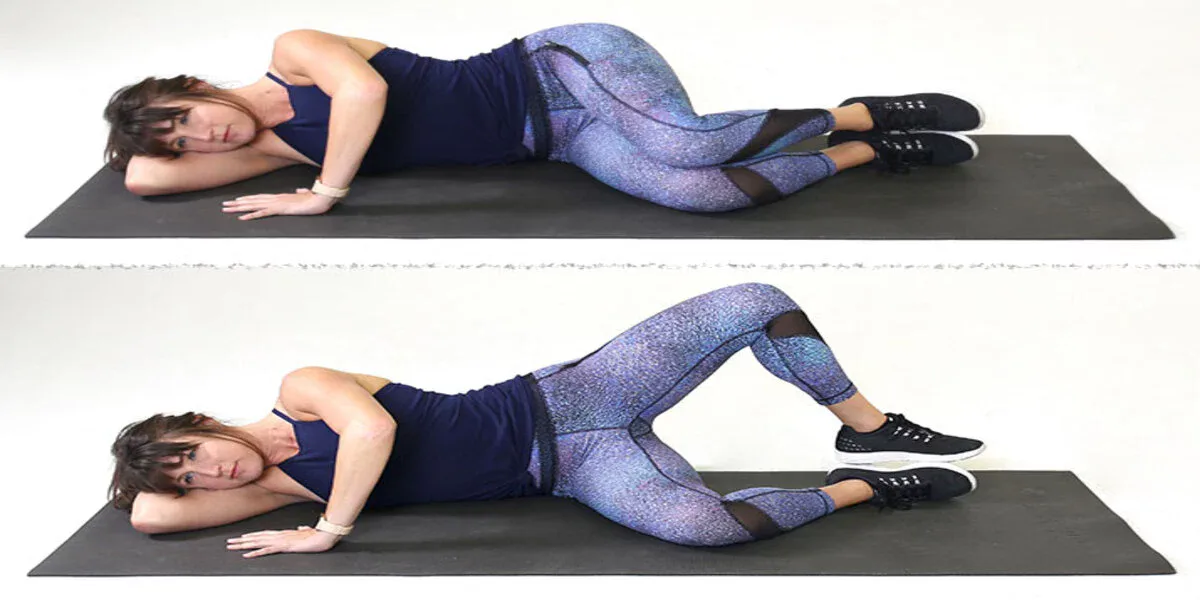
To perform this exercise:
- Lie on your side with your knees bent and stacked on each other.
- Keeping your feet together, lift the top knee while keeping your hips stable.
- Lower the knee back down.
- Repeat for 10-15 repetitions on each side.
Hip Bridges
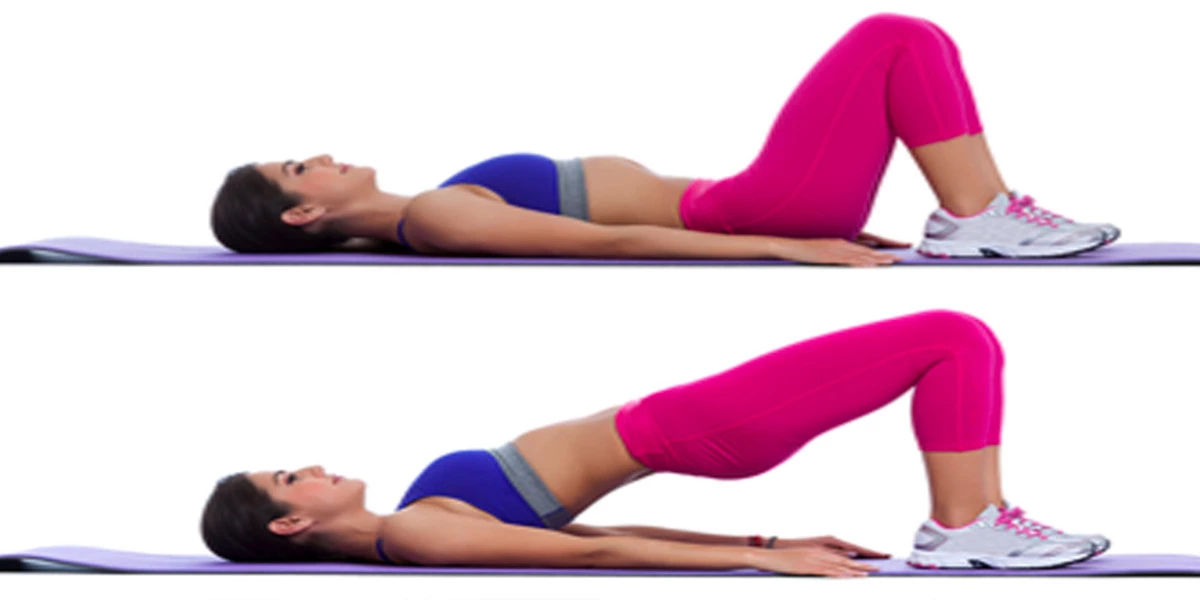
To perform this exercise:
- Lie on your back with your knees bent and feet flat on the floor.
- Engage your core and glute muscles, then lift your hips off the floor, creating a straight line from your knees to your shoulders.
- Lower your hips back down.
- Repeat for 10-15 repetitions.
Low-Impact Aerobic Exercises for Hip Health
Low-impact aerobic exercises help improve cardiovascular fitness without excessive stress on the hip joint. These exercises promote blood circulation, strengthen the surrounding muscles, and maintain hip health. Consider the following activities:
- Cycling
- Swimming
- Elliptical training
- Water aerobics
Proper Body Mechanics and Posture
Maintaining proper body mechanics and posture is essential for managing hip pain. Poor alignment and incorrect movement patterns can exacerbate hip pain and lead to further injury.
Remember the following tips:
- Stand tall with your head aligned with your spine.
- Engage your core muscles to support your lower back and hips.
- Use proper lifting techniques, bending at the knees and hips rather than the waist.
- Avoid sitting or standing in one position for extended periods.
Using Heat and Cold Therapy for Pain Relief
Heat and cold therapy can provide temporary relief from hip pain. Applying a heating pad or warm towel to the affected area can help relax muscles and increase blood flow.
Cold therapy, such as ice packs or cold compresses, can reduce inflammation and numb the area. Use these therapies for 15-20 minutes, with a break in between.
Lifestyle Modifications for Hip Pain Management
In addition to exercises, certain lifestyle modifications can help manage hip pain effectively.
Consider the following:
- Maintain a healthy weight to reduce stress on the hip joint.
- Use assistive devices like canes or crutches to offload weight when necessary.
- Wear supportive footwear with cushioning and arch support.
- Avoid activities that exacerbate hip pain or put excessive stress on the joint.
Tips for Preventing Hip Pain
Prevention is critical to maintaining hip health and avoiding pain.
Follow these tips to prevent hip pain:
- Maintain a regular exercise routine that includes activities for hip strength and flexibility.
- Practice good posture and body mechanics in your daily activities.
- Take breaks and stretch if you have a sedentary job.
- Avoid sudden or repetitive movements that may strain the hip joint.
Conclusion
Managing hip pain requires a comprehensive approach that includes therapeutic exercises, lifestyle modifications, and proper body mechanics.
Incorporate stretching and strengthening exercises into your routine to improve flexibility and stability in the hip joint. Low-impact aerobic exercises can help maintain overall hip health.
Additionally, practicing good posture and using heat or cold therapy can relieve pain. Remember to consult a healthcare professional for a personalized treatment plan based on your condition.



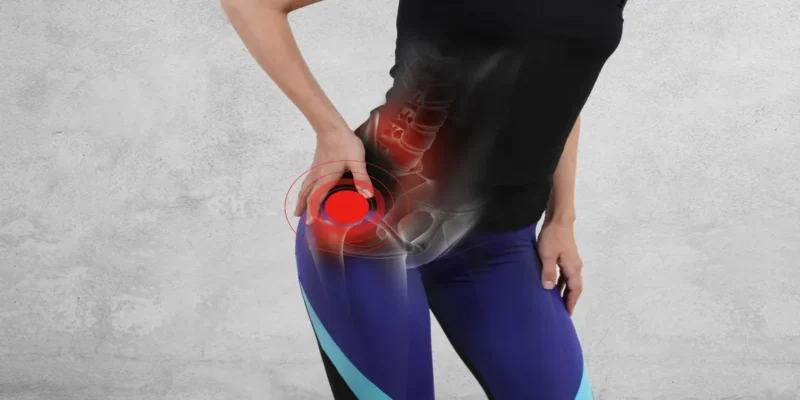
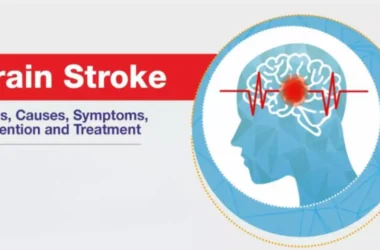


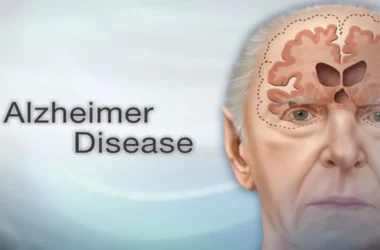
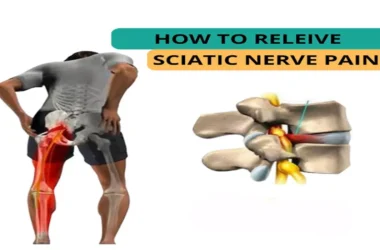
Love your low impsvt! I will be 86 in Sept and don’t get around much anymore!
Me ha resultado muy util